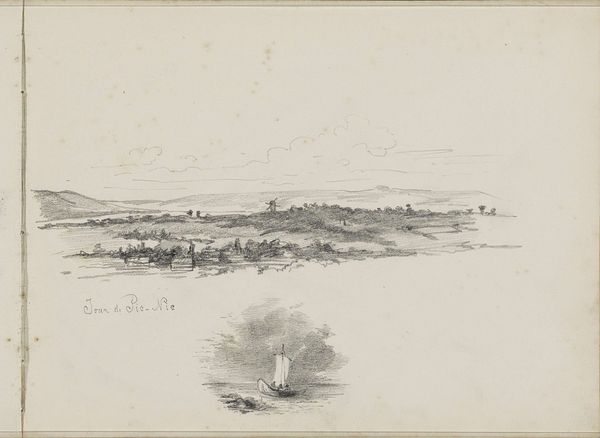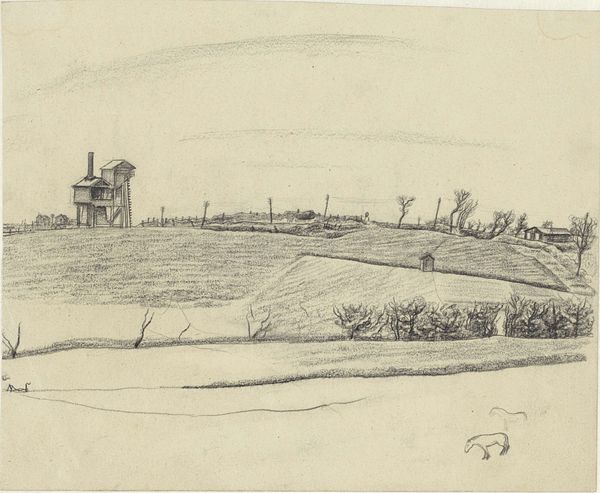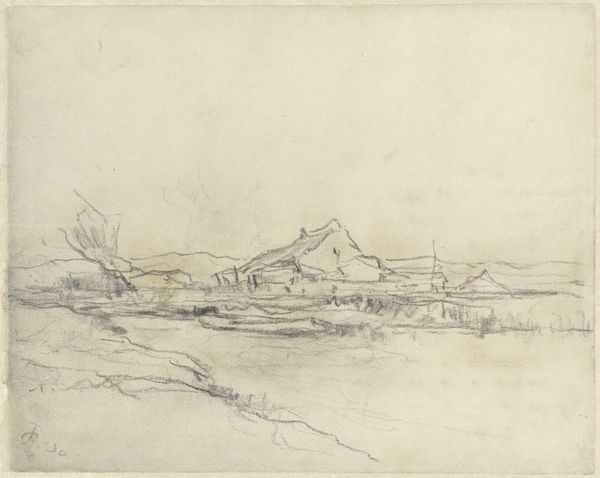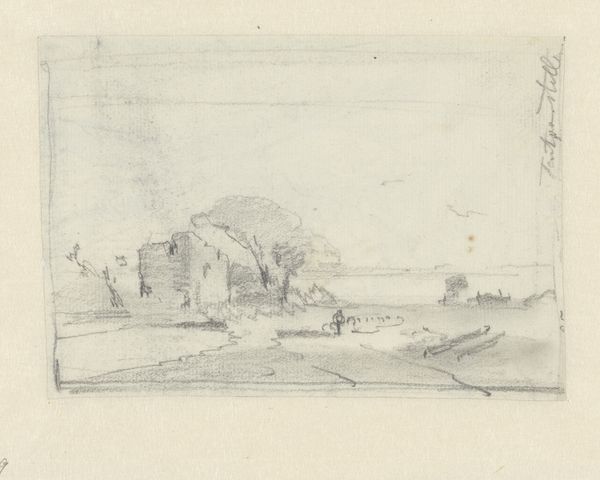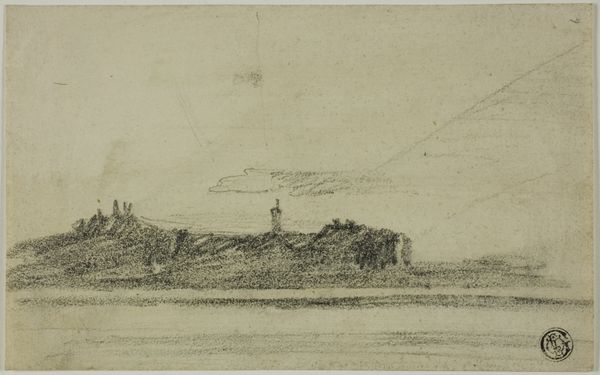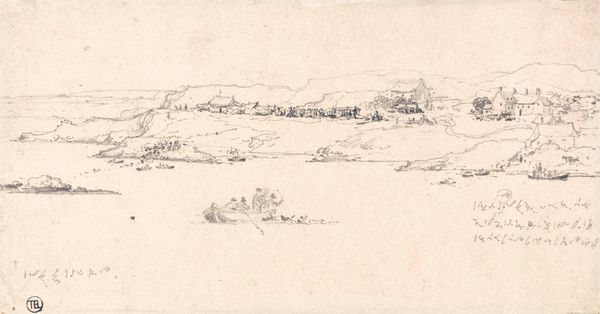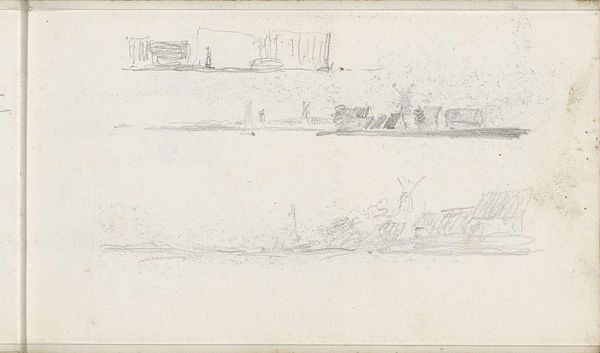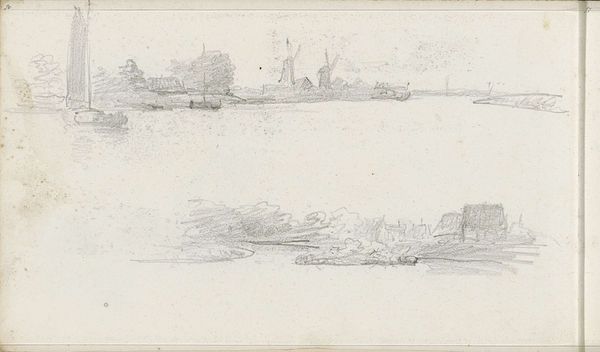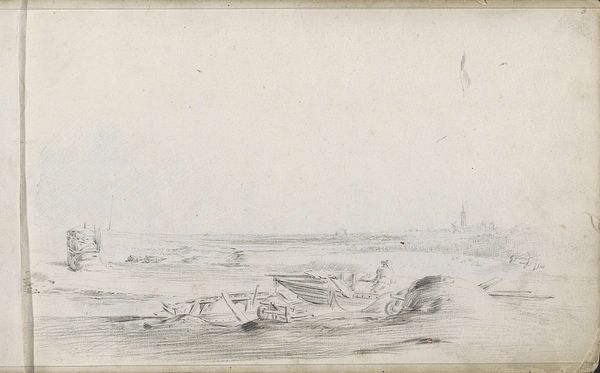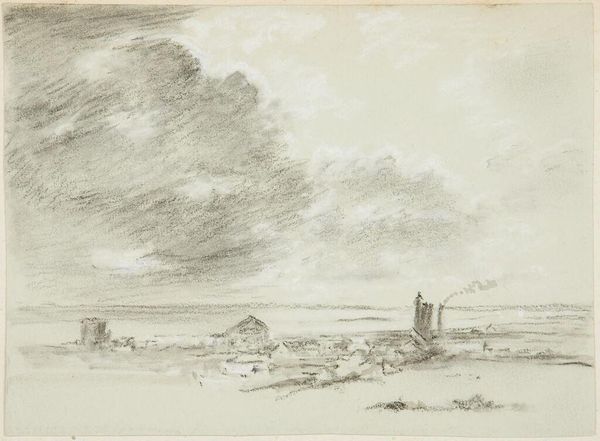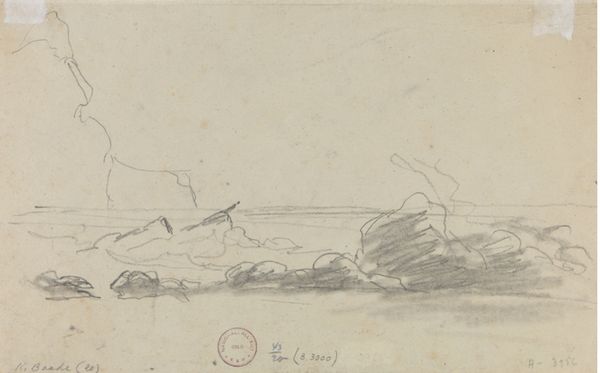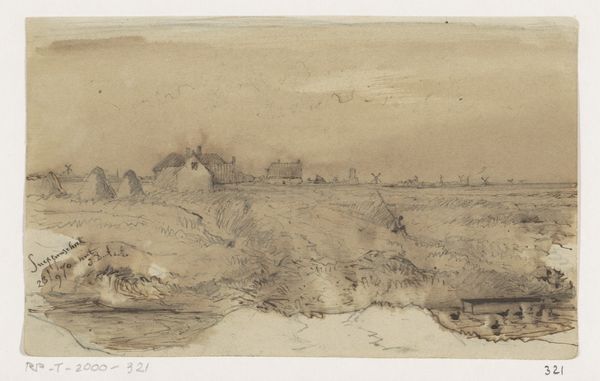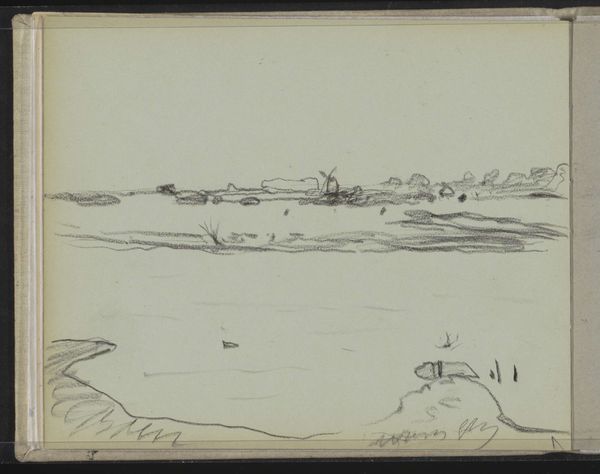
Copyright: Public Domain: Artvee
Curator: Let's consider "La Tehin de la Guayra," a pencil drawing made by Camille Pissarro in 1854. Editor: Immediately, I feel a certain stillness looking at it. The soft pencil strokes create a hazy atmosphere, as if time itself is suspended in this coastal landscape. It invites reflection. Curator: Pissarro, a key figure in Impressionism and Post-Impressionism, made this drawing quite early in his career, while living in Venezuela. The work can be considered within the framework of colonial history and migration, so who is allowed the leisurely appreciation of beauty versus experiencing an actively threatening landscape, depending on position in systems of power. Editor: The fort-like structure in the foreground intrigues me, almost like a simplified watchtower from the Renaissance, promising some form of safety, maybe protection for the port nearby. Its repetitive geometrical features contrast to the naturalistic landscape. It feels as if Pissarro attempts to visually weave the built environment into the overall terrain. It carries visual weight by breaking with an organic layout. Curator: Precisely. Consider the colonial gaze inherent in landscape art of this era. How might Pissarro's portrayal of "La Guayra," the port city, consciously or unconsciously, participate in the construction of Venezuelan identity and its place within broader imperial narratives? Is he merely recording, or is he subtly interpreting, reinforcing, or perhaps even challenging power dynamics through his artistic choices? Editor: And consider the pencil. A common, easily accessible tool for the average artist, or citizen looking for mementos, not usually celebrated on its own but functioning well for replications. In this regard, the picture does capture, almost replicates the real space for its contemporaries. Pissarro emphasizes the accessibility of capturing nature. Curator: In considering these issues and in his work, we can begin to engage more critically with his art, prompting questions about the intersection of art, history, and power. Editor: It moves the visual symbolism toward a socio-political framework. Fascinating, truly!
Comments
No comments
Be the first to comment and join the conversation on the ultimate creative platform.
